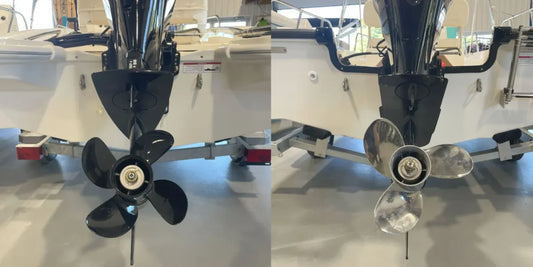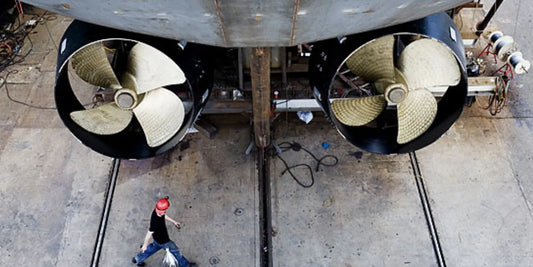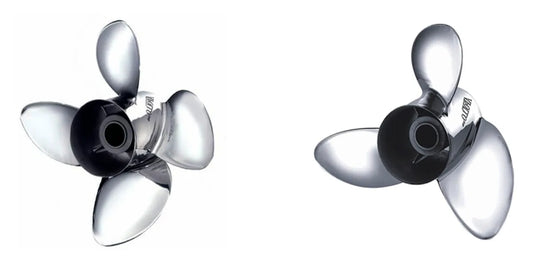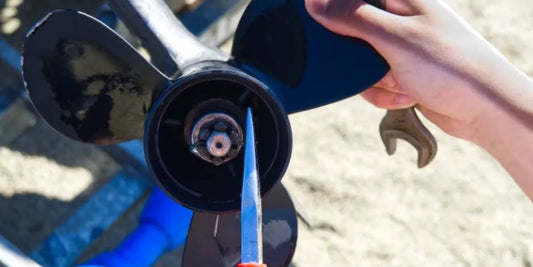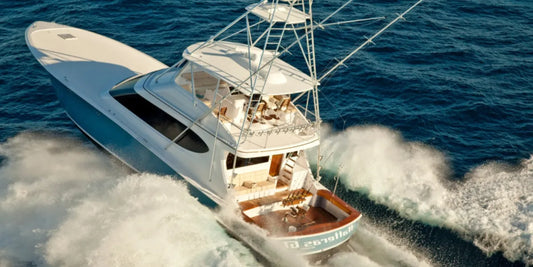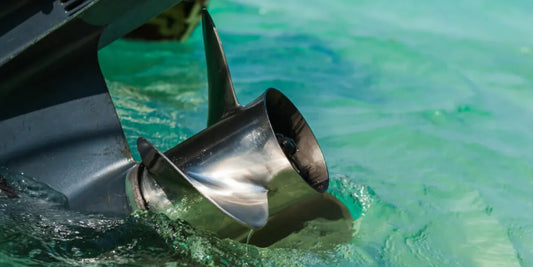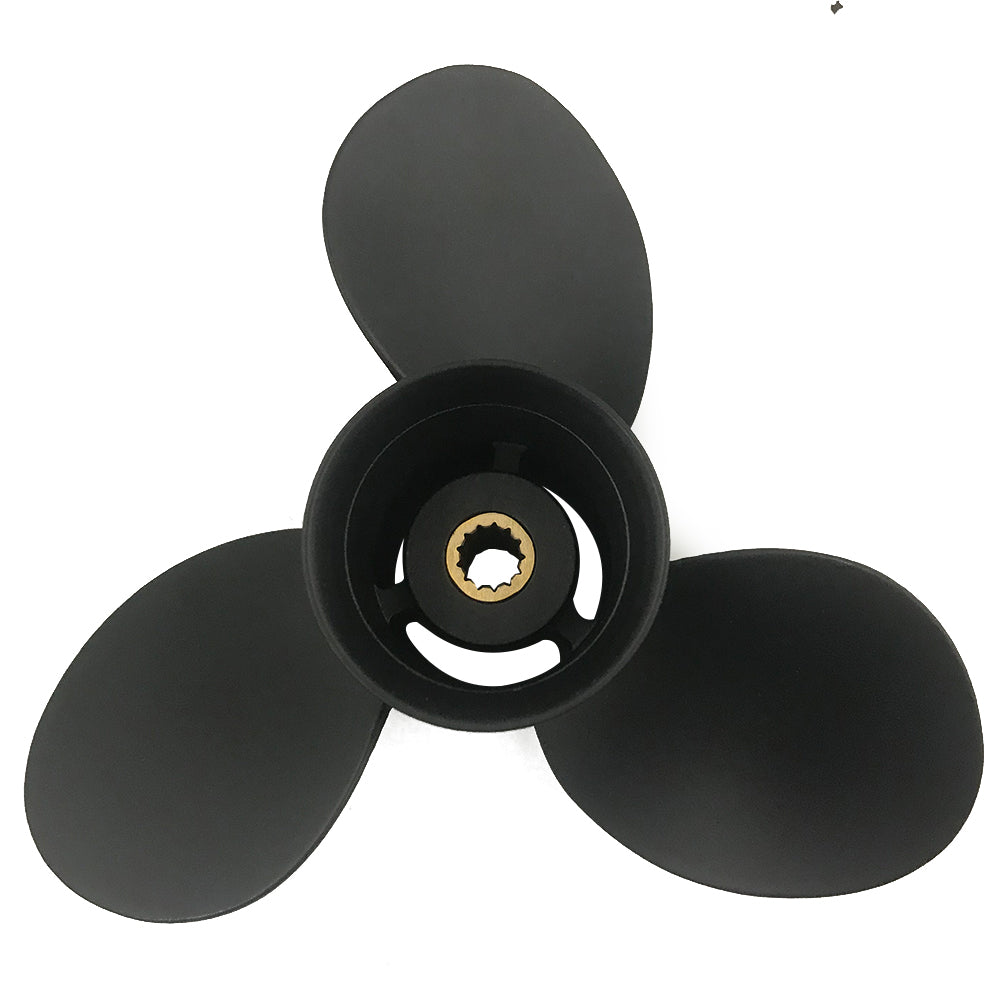Volvo Penta Duo Prop is a well-known favorite for boating enthusiasts because it provides exceptional power, efficiency, and maneuverability. For boaters to have the best experience, smooth performance and reliability are essential. Precise maintenance is required to maintain the propulsion system’s peak performance and durability. This article provided necessary best practices and maintenance tips that help avoid costly repairs and boost fuel efficiency while providing smooth and stress-free sailing. From seasoned mariners to beginners, these tips will help make the most of their investment and enjoy excursions on the open water without worries.
What is the Volvo Penta DuoProp System?

Understanding the Volvo Penta Engineering
The Volvo Penta DuoProp system is a revolutionary counter-rotating propeller design that enhances performance, reliability, and efficiency, serving as a breakthrough in marine propulsion technology. This innovative system’s heart is a set of two coaxial propellers that counter-rotate, working synergistically to provide exceptional thrust while minimizing water turbulence. Moreover, the DuoProp system improves acceleration, handling, and fuel economy by increasing underwater grip and reducing drag.
These propellers are engineered with precise dimensions and crafted using high-quality materials such as stainless steel and aluminum alloys, which provide longevity in harsh marine environments. Furthermore, the DuoProp system’s careful balancing contributes to reduced ride and engine vibrations, making the system quieter overall. This advanced engineering demonstrates Volvo Penta’s unwavering focus on providing dependable and effective systems for contemporary boaters, enhancing their experience on water.
How the Duo Prop Mechanism Works
The DuoProp mechanism works through a counter-rotating propeller system consisting of two propellers on the same axis. This arrangement ensures that the opposing rotational forces are canceled, improving stability and efficiency. While the engine is producing power, the propellers rotate in opposite directions. This synergistic action maximizes thrust while minimizing drag, which enhances acceleration and increases fuel efficiency, thus making it ideal for leisure and commercial vessels.
The engineering design of the DuoProp system allows for better torque transfer than traditional single-propeller systems, which suffer from cavitation and propeller slip. Tests have confirmed that boats equipped with DuoProp can plane faster and have improved agility and Maneuverability, even when heavily laden or in rough waters. This innovative approach provides unparalleled control and performance on demand for boaters, whether cruising in calm waters or battling heavy seas. With this remarkable combination of power and precision, the DuoProp mechanism transforms the boating experience.
Benefits of Using DuoProp in Boating
Increased Fuel Efficiency: DuoProp technology is advantageous in boating fuel savings and efficiency. Improved propulsion with minimized energy waste drives down fuel consumption while reducing drag and turbulence. Because of these benefits, boaters can travel longer distances at a cheaper cost and with a lower environmental impact.
Improved Vessel Control and Stability: The dual propeller's shape enhances overall stability and vessel control. The reduction in steering torque also improves control of the vessel, allowing smoother turns without loss of acceleration even during rough weather. Enhanced stability is vital for rough seas and windy conditions.
Improved Acceleration and Speed: With DuoProp, boats outperform single-propeller systems in speed and acceleration. Balanced thrust from counter-rotating blades means the engine's full power is utilized to propel the ship. All speed and power advantages are critical for water sports and high-speed boating.
Reduced Noise and Vibration: Operating DuoProp significantly reduces noise and vibration compared to conventional systems. The balanced rotation of the two propellers leads to smoother motion of the ship, minimizing stress on the engine and the ship’s structure. This enhancement leads to improved comfort and greater ease of use for onboard users.
Durability and Reliability: DuoProp systems' engineering prowess enhances their reliability and durability even in harsh conditions. These systems provide reliability whether under heavy loads or during extended usage, ensuring dependable functionality alongside a longer lifespan and reduced operational demands, thus decreasing maintenance and replacement needs.
Combined, these make it evident that DuoProp technology advances vessels' technical capabilities while improving the quality of maritime activities, thus marking a significant development in marine engineering.
How to Maintain Your Duo Prop for Optimal Performance?

Regular Propeller Inspection
Regular inspection of DuoProp systems is essential for achieving optimal performance, both operationally and in terms of lifespan. Start with visually examining the propeller blades to check for any damage, including cracks, bends, or chips. Even small imperfections can lead to inefficiencies, imbalances, and a reduction in fuel economy. The tips of the blades are especially susceptible to damage, so they must be continually monitored. Equally, ensure that the propeller is free of marine growth such as barnacles and algae, as these can hinder performance if not removed. Regular cleaning with a gentle brush or non-abrasive marine cleaning solution helps reduce drag and improve operational efficiency.
Equally important to any other inspection form is ensuring that the propeller hub and associated hardware are checked to confirm that tightness is within nominal values. Looseness can also pose a risk and induce unnecessary vibration and noise, which places excess strain on the engine and transmission. In addition, look for signs of abnormal corrosion that could compromise the propeller's structural integrity and components. During maintenance, applying marine-grade grease on the propeller shaft helps prevent rust, allows for effortless removal, and ensures hassle-free installation when needed. Incorporating these inspections into your maintenance schedule will provide you with the means to increase the lifespan of your DuoProp and ensure optimal water performance.
Cleaning and Lubricating the Duo Props
Regular maintenance of DuoProps directly influences both functionality and longevity. Cleaning the propellers begins with detaching them from the shaft and checking for accumulated debris such as barnacles. A soft-bristled brush and mild soapy water remove all dirt, including the inner hub area. Built-up residue can be safely tackled with marine-grade cleaners that do not harm the surface.
Wait until the propellers dry thoroughly before proceeding with lubrication. As for the DuoProps, apply marine-grade grease to the shaft, covering friction and wear areas. Grease application enhances rotation and prevents propeller rusting due to saltwater corrosion. Furthermore, the propeller nuts and washers must be cleaned and greased to ensure efficient function post-assembly. Following these suggested steps will preserve DuoProps from damage while retaining watercraft functionality. Regular maintenance and diligence are essential to enhancing the value of your asset.
Identifying Signs of Wear and Tear in Volvo Penta Props
It is vital to identify early signs of wear and tear on Volvo Penta propellers to avert costly repairs and preserve peak performance. Paint loss on the blade edges may indicate a chip or bend, disrupting water flow and reducing efficiency and propulsion torque. Another red flag is surface corrosion or pitting on the propeller. This often results from insufficient maintenance and prolonged exposure to saltwater. Noise and vibration patterns outside the standard operational envelope can also indicate imbalance or damage within the propeller system.
Pay close attention to the propeller shaft as well; excessive clearance or wobble induces additional friction, which leads to aggressive thrusting and over-torquing. Examine the hub for fractures or signs of wear to maintain the propeller is integrity. By routinely diagnosing and treating the previously described issues, the performance of the Volta Penta props can be optimized, and longevity assured.
Why Choose Stainless Steel DuoProp?

Advantages of Stainless Propellers
Stainless steel propellers that meet boat owners' performance requirements offer numerous benefits. Due to its greater strength, stainless steel is known for offering better resistance to high stresses and damage compared to aluminum and other materials. This means stainless steel propellers perform optimally even under harsh conditions such as heavy loads and rough waters.
Another important aspect is that stainless steel propellers offer better fuel economy and improved efficiency. Since these propellers have rigid structures, they maintain their designed shape under load, leading to better thrust, decreased water slippage, and lower fuel consumption. This leads to better acceleration, speed, and overall performance of the vessel engine, which helps propel the vessel and promote efficiency.
Stainless steel propellers also offer advantages concerning corrosion resistance, especially in saltwater, making them a longer-lasting investment. If maintained properly, they have the potential to withstand extreme conditions without undergoing significant wear and tear when compared with other propeller materials and, therefore, provide greater value in the long run.
Another benefit stems from the accuracy of the design. For achieving specific objectives, be it maximizing speed, towing, or economic fuel consumption, stainless steel propellers are often offered in a greater selection of blade shapes. This flexibility lets boaters choose a propeller that best matches their requirements, optimizing the boating experience.
Comparing Stainless Steel to Aluminum Props
Critical issues arise while evaluating aluminum and stainless-steel propellers, such as performance, cost, versatility, and durability. Due to the wear, corrosion resistance, and impact damage, stainless steel propellers are more durable. This enhanced durability often translates to a longer lifespan, making them ideal for avid boaters in terms of investment value. In contrast, while lacking in durability, aluminum propellers are affordable and are a practical option for casual or infrequent boaters.
Performance represents yet another critical area of differentiation. Typically, stainless steel propellers undergo more rigorous manufacturing processes and have more intricate features that improve acceleration, top-end speed, and fuel economy. Therefore, they are preferred for high-performance uses or boats with demanding operational needs. On the other hand, aluminum propellers are lighter and may flex under load, reducing efficiency. This characteristic makes them suitable for novice users or low-demand environments.
Cost is often a decisive factor for most boaters. Unlike aluminum propellers, stainless steel propellers have a larger initial investment, but increased durability and stainless steel's superior performance make them more economical in the long run. On the other hand, aluminum propellers are inexpensive and convenient, appealing to owners looking for a low-priced alternative or those desiring an economical backup.
The tradeoff between stainless steel and aluminum still depends on the boater's specific needs, operating conditions, and budget. Aluminium works for users who prioritize cost, while stainless steel works for those who value performance. Both materials are essential in improving the boating experience based on the user's priorities.
Cost vs. Longevity of Stainless Steel DuoProp
Evaluating the cost and longevity of stainless steel DuoProp systems stainless steel’s DuoProp systems warrants the initial investment, durability, and overall performance. Stain steel's strength and corrosion resistance cost it more upfront than aluminum DuoProps. Nevertheless, the enduring lifespan of stainless steel typically balances this spending. This type of metal can better withstand challenging marine environments, offers better wear protection against debris, and maintains structural integrity under significant workloads.
The long-term return offsets initial spending for frequent travelers or those routing through tricky waters, making stainless steel more economical. The reduced need for repairs or replacements improves maintenance costs. Fuel savings and lower operational expenses from the increased efficiency result in dual prop systems paying for themselves through enhanced performance. The steep upfront sticker price of stainless prop systems is countered by long-term durability, reliability, and low maintenance, making it appealing for dedicated boaters.
Common Problems with Volvo Penta DuoProp

Troubleshooting Vibration Issues
Vibration problems within a Volvo Penta DuoProp system typically point towards more profound mechanical difficulties, which, if neglected, could significantly deteriorate performance or lead to extensive damage. Common issues such as misalignment, trapped debris around the propellers, or damage to the propeller can lead to vibration. Inspecting the propellers for any dents, cracks, or signs of wear is crucial because even the slightest imperfections can severely compromise balance and performance. Also, aligning and securing the props will prevent unwanted vibrations caused by loose fittings or propeller misalignment.
Over time, harsh operating conditions can cause wear on various shafts and bearings. In excess, these components can create instability through the drivetrain. Regularly scheduled maintenance and timely replacement of worn components prevent these issues. In addition, barnacles and algae, which are considered marine growth, tend to accumulate on propellers. Marine growth can disturb hydrodynamics, leading to inconsistent performance. Disturbing consistent smooth operation can be ensured by keeping propellers free of growth.
Addressing Engine Performance Problems
Various reasons may lead to DuoProp system engine performance issues, which require immediate attention for optimal performance. One such reason is improper fuel delivery due to clogged fuel injectors or a malfunctioning fuel pump. This can often lead to irregular engine functionality, reduced fuel efficiency, or power loss. Such issues can be resolved through routine inspection and maintenance of the fuel system.
Overheating is another issue significantly impacting engine performance. Insufficient coolant levels, malfunctioning water pumps, or blockages in the cooling system are all prominent reasons. Regular monitoring of the engine temperature and the cooling system can go a long way in preventing long-term damage.
The condition of the ignition system is another factor that should not be neglected. Outdated spark plugs and old ignition coils lead to incomplete combustion, engine misfires, and inconsistent power delivery. Regular spark plug replacement and inspection of other ignition components can enhance reliability.
Lastly, restrictions on the intake air may limit the engine's efficiency and power output. Maintaining peak performance requires cleaning and replacing air filters when necessary. Following these simple preventative measures allows boaters to reduce downtime and achieve better reliability and performance from their DuoProp system.
Resolving Sterndrive Concerns
While sterndrives are popular for their multifunctional capabilities, they also have specific problems that must be fixed. One of the problems is corrosion, especially in areas with saltwater. Using suitable anodes for sterndrives and applying anti-corrosion paints helps against this armor. Continuous monitoring of wear and rust is also essential for the system's life.
Another issue is overheating, which can accompany a stuck cooling system or a failed impeller. Overheating is controllable through consistent flushing of the cooling system and replacing certain parts, like the impeller. Furthermore, driveline vibrations could occur due to misalignment of the parts or broken propellers. Misalignment checks and inspections for propeller cracks and bends will remove the risk of added complications.
By developing an active maintenance plan tailored to address these frequent problems, operators can reduce troubleshooting and operational downtime and achieve consistent performance from their sterndrives.
How to Replace Volvo Penta DuoProp Propellers?

Step-by-Step Propeller Replacement Guide
Swapping out the DuoProp propellers on a Volvo Penta sterndrive is as simple as long as you use some care and have the proper tools. To ensure the sterndrive operates efficiently, follow these steps for replacement:
Before Starting the Job: As with any task, you should have a complete tool set that includes a propeller wrench, marine grease, work gloves, and a wood block. Having the replacement propellers on hand and appropriately sized to the engine’s specifications will save time later.
Remove Existing Propellers: Start by putting the sterndrive into neutral and switching off the engine. Put a block of wood between the blades and the anti-ventilation plate to keep the propeller from rotating. Loosen the front propeller nut with a propeller wrench, and don’t forget to preserve washers or spacers in the order they were used for reinstallation. The front propeller can be removed, followed by the rear propeller, using identical steps.
Check the Condition of the Propeller Shaft: After removing the old propellers, check the propeller shaft for any signs of damage and clean it with a soft cloth. Make sure to use marine-grade grease after cleaning the shaft to protect it from corrosion and ensure smooth installation.
Put in Place the New Propellers: Position the rear propeller onto the shaft and align it with the spline. Place the previously removed washers or spacers back in the correct order. The nut should be threaded onto the shaft after. The nut should be hand-tightened before securely fastening it with the propeller wrench. Align the front propeller and repeat the steps, ensuring no vibrations or inefficiencies occur.
Make Adjustments if Needed: Check to see if the propellers will turn without any hindrances after installation. After checking that the propellers are spinning freely, lower the sterndrive into the water and do a trial run to ensure everything is working correctly.
By following all the steps mentioned above, you should be able to replace Volvo Penta DuoProp propellers with the expectation that the sterndrive system will function optimally. Propellers need to be replaced regularly to reduce the risk of serious mechanical problems down the line.
Tools Needed for Prop Replacement
Experience tells me that properly outfitted is half the battle in swapping out a prop. A quality torque wrench tops the list because the nuts must be tightened to the correct specification, or they may loosen mid-use or strip the threads. A socket or box end that fits the nut snugly is also a must; size charts from the engine builder will steer you to the correct dimension. If the old blades refuse to slide off the shaft, nothing sticks like salt-crusted aluminum- a prop puller is the safest, least nerve-racking way to break that bond. Putting mechanical advantage to work keeps hands clear of pinch points and spares the shaft from heroically unnecessary dings.
I always keep a tub of marine-grade grease handy. A quick coat on the prop shaft splines stops moisture in its tracks, making sliding the assembly on or off feel almost dignified. Heavy-duty gloves are a must whenever sharp-bladed props are in play; a single slip can ruin an afternoon.
For the shaft itself, nothing beats a stiff wire brush or a fresh, lint-free rag; both yank built-up grime away and leave the surface ready to bond with a new wheel. A flat-head screwdriver or a pair of pliers comes in clutch for those stubborn cotter pins or last-minute tweaks. Organizing those odds and ends ahead of time keeps the entire swap tidy and, more importantly, out of the way of the next tide. The payoff is a Volvo Penta DuoProp that spins freely and answers a captain's touch with the least fuss possible.
Ensuring Correct Installation of DuoProp
Before picking up a tool, I pull out the Volvo Penta manuals and scan the factory step-by-step directions. Those pages break the job down into bite-sized actions and remind me which fasteners and clearances matter. I double-check that the port and starboard props are the right pitch for my engine; a mismatched pair can starve the drive of power and, worse, twist the shaft threads.
With the paperwork locked in my head, I spread the parts across a clean bench and searched for any nicks, cracks, or bent splines that could sneak past me. The yoke grooves get a thin coat of blue marine grease so the blades slide home easily and rust doesn't start a few months later. A quarter-turn of the torque wrench proves louder than it looks on paper, yet that precise click keeps the nuts from either dancing loose or choking the assembly shut.
Once the DuoProp is secured, I lower the unit into the water for a brief test run. The exercise lets me verify that the engine engages smoothly and that the artisan craftsmanship in the install holds up under real torque. If I sense any odd vibrations or notice a hiccup in acceleration, I chalk it up to flawed alignment-or worse-and dive back under the rig to set it right. Taking this methodical precaution lets me leave the dock certain the twin-blade arrangement is primed for the high-end efficiency I intend to wring from it.
Reference Sources
-
Volvo Penta DP-SM Maintenance - The Hull Truth Forum
A forum discussion with practical advice on maintaining Volvo Penta DP-SM systems. -
Volvo DPS Duo Prop Maintenance - iBoats Forum
Insights on routine maintenance tasks like oil changes and system checks. -
Rehubbing Volvo Penta Duo Prop: Expert Advice & Tips
Expert advice on rehubbing and maintaining Volvo Penta Duo Prop systems. -
The Art of Performance - Volvo Penta Propeller Guide
Official Volvo Penta guide detailing propeller care and performance optimization.
Frequently Asked Questions (FAQs)
Q: What is the benefit of having a Volvo Penta Duo Prop system?
A: With the Duo Prop system, you get better acceleration and improved torque with the counter-rotating propellers. It performs better because it grips the water more efficiently. Furthermore, the system also reduces cavitation while improving the overall handling and stability of the boat.
Q: How often should the Duo Prop system be serviced?
A: Performance is another factor that is heavily dependent on maintenance. In this case, servicing the Volvo Penta Duo Prop systems once every year or 100 hours of usage maximizes their efficiency. This is in addition to servicing the propellers, drivetrain, and outdrive parts and checking for any damage or wear.
Q: Is it possible for me to have a type F propeller with the Duo Prop System?
A: A type F propeller is acceptable for some duo prop systems as long as the other system requirements are met. Look through the user manual or call Volvo Penta US to ensure you have the correct model.
Q: What should I do if I notice unusual vibrations in my Volvo Penta Duo Prop system?
A: Some issues that could cause unusual vibrations include damage to the propellers and other drivetrain components. You must stop using the boat and check the propellers immediately. See a certified Volvo Penta technician if you don’t find anything and the problem continues.
Q: How can I protect my Volvo Penta Duo Prop system from corrosion?
A: Remember to rinse your Duo Prop system with fresh water after use, particularly if you used salt water. This will help mitigate the corrosion. Applying an anti-corrosive spray will also minimize the damage. Conducting regular inspections and maintenance is also crucial in preventing corrosion.
Q: Are stainless-steel duoprop propellers better than aluminum ones?
A: Stainless steel duo prop propellers are known to perform better and be more durable than aluminum ones. They also provide greater strength and are less prone to damage from debris or impact. The downside is that they tend to be more costly, so the advantages should be measured against the price.
Q: What is the difference between the SX and DPS drives in Volvo Penta systems?
A: The SX drive is a single propeller system, while the DPS drive is equipped with the Volvo Penta Duo Prop system, which utilizes counter-rotating propellers. The DPS drive offers superior handling, vessel acceleration, and fuel economy than the SX drive.
Q: How do I choose the propeller for my Volvo Penta Duo Prop system?
A: The selection of the propeller hinges on the vessel's dimensions, weight, and how you intend to utilize it. The propeller pitch, diameter, and even the material must be taken into consideration. You may refer to the Volvo Penta propeller guide or consult a certified dealer who can help you make the right choice for your requirements.
Q: What are the signs that my Volvo Penta Duo Prop system needs repair?
A: Degraded performance, strange sounds, abnormal vibrations, and damaged propellers are all symptoms that your Volvo Penta Duo Prop system might need repair. Performing routine checks can detect problems early before they become harder to fix.


